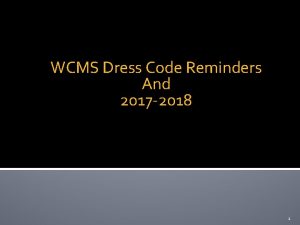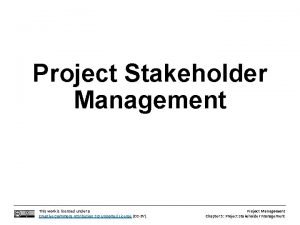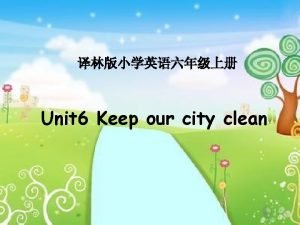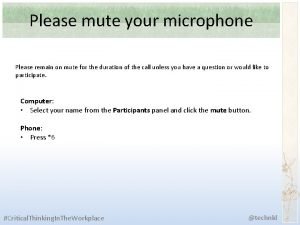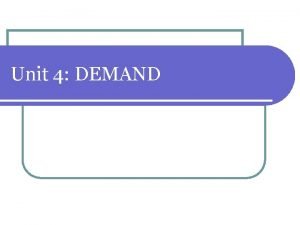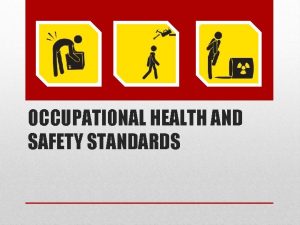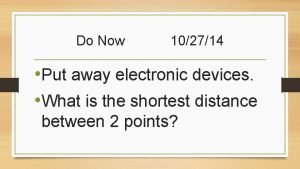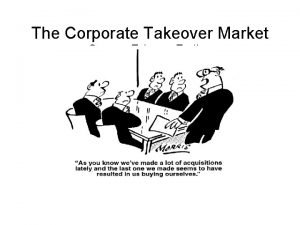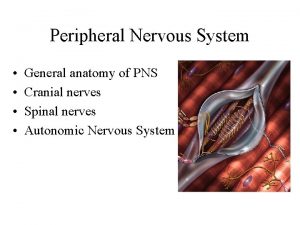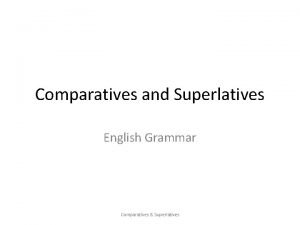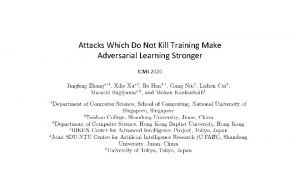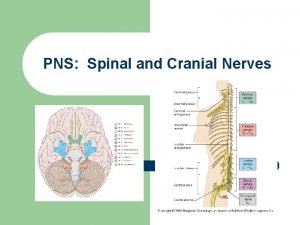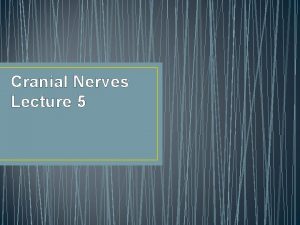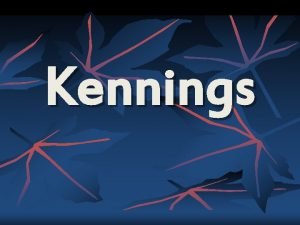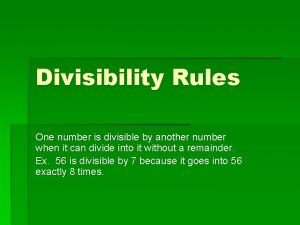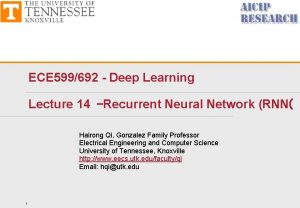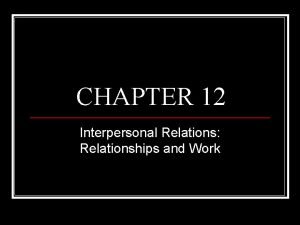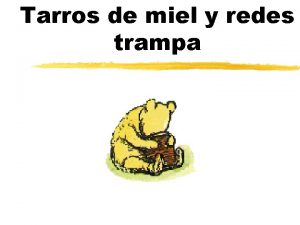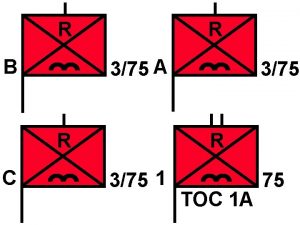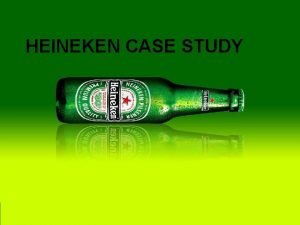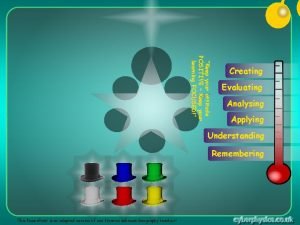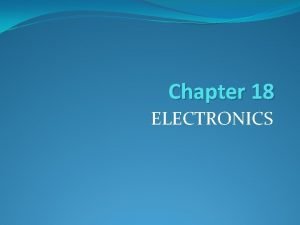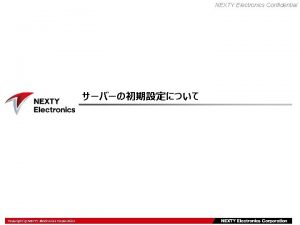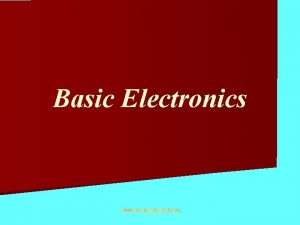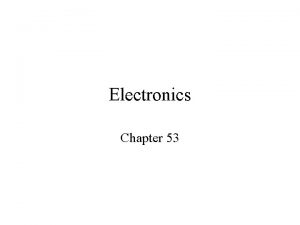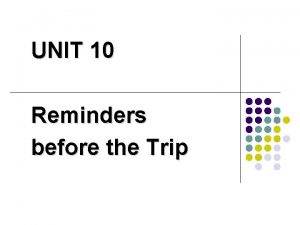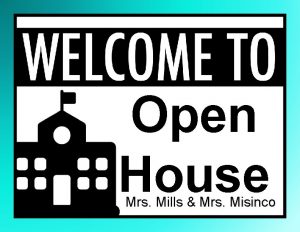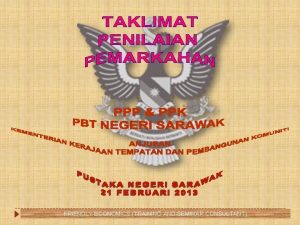Friendly Reminders Keep your electronics away If I











![¨ ¨ Organize new businesses Choose products Raise capital [money] Use capital to gain ¨ ¨ Organize new businesses Choose products Raise capital [money] Use capital to gain](https://slidetodoc.com/presentation_image_h2/7de7e2e1b36126ab263c69fd5ab92b47/image-12.jpg)



















































































- Slides: 95


Friendly Reminders ¨ ¨ Keep your electronics away. If I see them I will take them, and depending on what you bribe me with, you might have to get it back from the office. Pay attention when you are supposed to pay attention and talk when you are supposed to talk. Remember, when I am talking, you need to be listening. You will have time this period to talk, I promise.

Please open your interactive notebook and format it in the Cornell note style. Q u e s ti o n s Notes Summary Write here SS# 10. 3. 1 – Analyze why England was the FIRST country to industrialize.


q New technologies develop q Crop rotation q Enclosure movement q q Increased crop yield Less workers needed q What now? will they do Write here

Large Population available Natural Resources q q q Water, Coal, Iron Ore, Rivers, & Harbors Write here Expanding Economy q q q Stable Banking system Strong overseas trade Political stability q q q Napoleonic Wars had not occurred on British soil Parliament encourage business growth through laws Factors of production q q Land Labor Capital (wealth)

Geography ¨ ¨ ¨ England’s rivers offered a dual advantage. Water power and transportation. England had natural harbors that benefited merchant ships. England would develop railroads which made the transportation of goods quicker and more effective.




¨ ¨ Because Britain had all the Factors of Production: Land, Labor & Capital Plus… entrepreneurs!
![Organize new businesses Choose products Raise capital money Use capital to gain ¨ ¨ Organize new businesses Choose products Raise capital [money] Use capital to gain](https://slidetodoc.com/presentation_image_h2/7de7e2e1b36126ab263c69fd5ab92b47/image-12.jpg)
¨ ¨ Organize new businesses Choose products Raise capital [money] Use capital to gain necessary resources Name a modern day entrepreneur ____________________ Write here

Complete: üSection summary (3 -5 sentences) üAnswer the SS# 10. 3. 1 – Analyze Write here (Explain) why England was the first country to industrialize. üQuestions in the left side of your CN üGet a stamp from Mrs. K when completed

You need a few color pencils(provided) and just follow the instructions on the next slide. Also, you will be me working alongside you, but virtually ! 15

Industrial Revolution Urbanization Simulation Directions: Draw a river across the land (card) 1 1. 2. 3. 4. Draw 10 homes (pick one to be yours) Draw 1 store Draw 1 church Draw 1 school 2 Minutes timer

Factories, More people, and More Jobs, Oh My! Directions: Add the following to your town: 2 1. Two factories 2. 20 homes/apartment complexes to account for the new citizens of your town. 3. 1 more store 4. 1 more church 5. 1 more school 2 minute

Factories, More people, and More Jobs, Oh My! Directions: Add the following to your town: 3 1. 2. 3. 4. 5. Two factories 20 homes/apartment complexes to account for the new citizens of your town. 1 more store 1 more church 1 more school 2 minutes

Factories, More people, and More Jobs, Oh My! Directions: Add the following to your town: 1. 2. 3. 4. 5. 4 Two factories 20 homes/apartment complexes to account for the new citizens of your town. 1 more store 1 more church 1 more school 2 minutes

Factories, More people, and More Jobs, Oh My! Directions: Add the following to your town: 1. 2. 3. 4. 5. 5 Two factories 20 homes/apartment complexes to account for the new citizens of your town. 1 more store 1 more church 1 more school 2 minutes

! y h O M y M ,

Wrap-up- (underneath your sketch) ¨ ¨ ¨ How has your town changed because of answer here below your industrialization and urbanization? sketch Do you think the changes were good or bad? Explain your logic. Which of the towns would you prefer to live in? Why?

Cornell Notes 2 23

Please open your interactive notebook and format it in the Cornell note style. Write here SS# 10. 3. 3 – Q u e s ti o n s Notes Summary Describe the growth of population, rural to urban migration, and growth of cities associated with the Industrial Revolution.

Imagine your parents said you could no longer go to school and that you would have to go to work in a factory 6 days a week, and 14 hours every day… o You receive very little pay o The factory where you work is hot and the air is dirty o Your job is exhausting, dirty and dangerous o What would you do? o Write here next to your CN 21

Population Growth ¨ ¨ There were more people than ever before. Main reason for this growth is due to agricultural revolution 26


Rural to Urban Migration Rural= village , country side Urban= city Before IR, people in England lived in the rural areas. By mid 1800 s half the people of England lived in cities By 1900 other European countries became industrialized Population migration from rural to urban settings 28

Short Term Positive Effects ¨ Jobless farmers became city workers. ¨ Machine production of goods brought huge profit for the rich factory owners. ¨ England became rich and influential on the world stage ¨ New invention –Thomas Edison’s Bulb- This was only for the rich houses. 30

Short Term Negative Effect ¨ Cheaply built houses came up with no proper planning and building codes ¨ Poor or lack of sanitation for the big city population ¨ Overcrowded housing ¨ Diseases and epidemic spread ¨ Working conditions in the factories were miserable such as q 14 hours, 6 days a week q Dangerous q coal dust q Poor lighting q Injuries from machinery q Women and child labor was preferred = cheap labor LIFESPAN WAS SHORTER FOR THOSE LIVING IN CITIES THAN IN THE COUNTRY 31

Positive long-term Effects of IR Overtime… ¨ Housing improved ¨ Poor had the possibility to move up into middle class ¨ Diet and health improved Long –Term Negative Effect Since the demand for resources grew, England began to dominate other non industrialized nations of Africa and Asia and hence colonizing them 32

Left side of your notebook CAUSE EFFECT 33







Draw a political cartoon that highlights a condition or problem associated with the Industrial Revolution. You may choose to illustrate the pollution of the air, the hierarchy of social classes, the dangerous conditions in the factories, or the crowded living conditions in the cities. Write here next to your CN 8

Complete: ¨Section summary: Answer the SS# 10. 3. 3 –Describe the growth of population, rural to urban migration, and growth of cities associated with the Industrial Revolution. üQuestions in the left side of your CN üGet a stamp from Mrs. K when completed

This is your alternative assessment. Type your work on the word document and submit it in the haiku dropbox Write a speech in favor of or opposed to industrialization. Be sure to pick a character (examples: businessman, factory worker, child, woman, farmer, wealthy farmer, etc. . . ) One page in length required. OR Write a letter to a friend describing the working conditions in a textile factory and the living conditions in the city in which you work. One page in length required.

Cornell Notes 3 43

Please open your interactive notebook and format it in the Cornell note style. Write here SS# 10. 3. 2 – Q u e s ti o n s Notes Summary Examine how the scientific and technological changes and the new forms of energy brought about massive social, economic, and cultural change.

Imagine that almost everything you own needs to be made by hand because there are no machines to produce goods… o Imagine you no longer owned manufactured goods such as a spiral notebook, an i. Pod, a toothbrush, a carton of milk, or deodorant, etc… o How would this change your life today? o Describe your day from the time you got up this morning to right now o Write here next to your CN 11

q q Demand for clothing increased due to the rise in population Eli Whitney – cotton gin q Led to further inventions q Increased production Write here

Write here q James Watt q Improved steam engine q Powered boats q Powered machinery q Powered locomotives

Sketch a railway engine on the left page and answer the following question q. What impact will the railways have on society? Write here next to your CN


People were able to travel greater distances for leisure & to work Turnpike Trusts, canals & stage coach companies could not compete & went bankrupt. Townspeople were able to receive meat, fish, milk and vegetables brought in while they were still fresh by the railways. Fish & Chips Seaside towns developed; the railways made cheap day trips possible Social & Economic Impact of the Railways Newspapers could be sent from London all over the country People became more interested in politics & this led to the growth of political parties towns grew Industry grew, because the railways needed coal & iron; railways in turn allowed factories to transport their goods to markets. The Postal service speeded up First Class Mail

Write your summary for your today’s notes. Take the help of this graphic organizr Goods can now be sold for less. More people can afford to buy these goods Cycle of Prosperity More goods are sold & so more need to be produced. Railways make the moving of goods cheaper. More people with jobs means … Businessmen employ more workers.

Write here CAUSES 1. enclosure movement 2. crop rotation 3. inventions in textile machines 4. transportation improvements: steam engine, better roads 5. railroads expand EFFECTS 1. 2. 3. 4. 5. 6.

Complete: üSection summary (3 -5 sentences) Answer the SS# 10. 3. 2 – Examine how scientific and technological changes and new forms of energy brought about social, economic, and cultural change. üQuestions in the left side of your CN üGet a stamp from Mrs. K when completed

Cornell Notes 4 • ECONOMIC SYSTEMS 54

Agenda 1. 2. 3. DNA- Vocabulary Match-up Notes: Economic Systems Drawing Economic Systems

DNA- Match the Word to the Definition 1. The branch of knowledge concerned with the production, consumption, and transfer of wealth. 2. Author of the Communist Manifesto, a radical type of socialism. 3. The resources—including land, labor, and capital —that are needed to produce goods and services 4. An economic system based on private ownership and on the investment of money in business ventures in order to make a profit. 5. An economic system in which the factors of production are owned by the public and operate for the welfare of all. 6. An economic system in which all means of production—land, mines, factories, railroads, and businesses—are owned by the people, private property does not exist, and all goods and services are shared equally. • Communism • Socialism • Karl Marx • Capitalism • Economics • Factors of Production

Economic Systems Questions, Subtitles, Headings, Etc. 2 Essential Question: What were the economic systems that developed during the Industrial Revolution? Class Notes 1/2” 3 to 4 sentence summary across the bottom of the last page of the day’s notes

What is Economics? The science of how people seek to satisfy their needs and wants by making choices based on scarce resources Essentially, how people interact and trade with one another

Capitalism • Capital is needed to build factories, purchase machines and raw materials, and pay labor • Profit becomes prime motivation • Needs and desires of consumers met by quality goods at lowest price • Market Economy: Supply and Demand • Private – not state -- ownership

Problems with Capitalism- We will talk more about these later. • LOW WAGES: Barely above starvation level • LONG HOURS: 12 -16 Hrs. /day • Unsanitary and unsafe working conditions • Technology displaced workers

Socialism develops as a movement to displace Capitalism • CAPITALISM • Private individuals own and operate means of production • Private owners provide people with goods and services • Individual owners make decisions • SOCIALISM • Government ( representing people) owns and operates means of production • Government determines needs of the people • Government plans the economy

Utopianism • Sir Thomas More and Utopia (1516) • communal ownership of goods • communal organization of labor • Competition leads to sinful pride, envy, and greed. Both the poor and the rich suffer. • In “Utopia, ” money and private property are outlawed. Each household contributes goods and services to the community and draws from common stores.

Communism • Any economic theory or system based on the ownership of all property by the community as a whole • Challenge to Capitalism • A political movement (starting in Russia)

Socialism is different than Communism • Related • Socialism • Transitory phase between capitalism and communism • Some elements of Capitalism remain • Communism • Classless society in which all live by working and not by owning • State is nonexistent • Wage system is abolished

Drawing Economic Systems Capitalism Socialism Communism Utopianism Laissez-Faire Social Democracy

Capitalism • You have two cows. You sell one of them and buy a bull. The cow and the bull have a great love life, they create more cows. You make money selling the cows.

Socialism • You have two cows. The government takes one of them and gives it to your neighbor.

Communism • You have two cows. The government takes both of them and gives you part of the milk.

Utopianism • You have two cows. Everyone uses the milk and shares what they have

Laissez-Faire • You have two cows and the government doesn’t tell you what to do with them.

Social Democracy • You have two cows. The government makes sure your cows produce milk, and provides you with education and healthcare.

CORNELL NOTES 4 72

Cornell notes 5 73

Please open your interactive notebook and format it in the Cornell note style. Q u e s ti o n s Notes Summary Write here SS# 10. 3. 4 – Trace the evolution of work and labor.

Evolution of work from farm to factory ¨ ¨ ¨ The Industrial Revolution quickened the pace of workers lives and shaped how they worked and where they lived Millions were employed in mining and manufacturing –many working in a cash economy for the first time (and in cities too). Long term effect- rise in standard of living of the people in general 75

Division of Labor ¨ ¨ Industrial Revolution led to social class Upper class- rich industrialists, businessmen Middle class- professionals such as teachers, doctors, lawyers, shopkeepers and small businessmen Working class-Factory workers, construction workers 76

Workers complain ¨ ¨ ¨ Long hours 14 hrs. 6 days Dirty working conditions Low wages Women and children were preferred over men as they were cheap labor Dangerous working condition/boring work 77

Union Movement Unhappy workers formed labor unions to bargain with employers Its first effort to solve a problem is by collective bargaining- negotiation to resolve disputes between workers and employers ¨ If unsuccessful, it may be followed by a strike, in which the union members refuse to work until demandsa are met ¨ 78

The Demise(end) of the Slave Trade ¨ ¨ ¨ The industrial revolution was financed in part by slave trade. But industry became more profitable than slave trade 18 th century –slave trade was abolished in England, USA and other and much of Europe. Debate- Economic benefit of slavery vs. moral questions Industrial northern USA, many people felt that free labor – not slave labor- was the only way to grow a strong industrial economy. 79


¨ ¨ Less need of agricultural output = less slaves needed Free Labor required to grow a strong industrial economy

¨ Millions travel from Europe and Asia to the United States seeking new opportunities

Upper Class Middle Class Professionals: teachers, lawyers, shopkeepers, small business Lower Class Factory Workers and laborers Industrial Owners and Businessmen

Complete: ¨Section summary: Answer the SS# 10. 3. 4 –Trace the evolution of work and labor, including the demise of the slave trade, immigration, and the division of labor. ¨Questions in the left side of your CN üGet a stamp from Mrs. K when completed

Cornell Notes 6 New ways of Thinking 10. 3. 5 Analyze the emergence of capitalism as a dominant economic pattern and the responses to it, including Utopianism, Social Democracy, Socialism, and Communism 85

Please open your interactive notebook and format it in the Cornell note style. Q u e s ti o n s Notes Summary Write here SS# 10. 3. 5– Analyze the emergence of capitalism as a dominant economic pattern and the responses to it, including Utopianism, Social Democracy, Socialism, and Communism.


¨ Philosophers of Industry: ¡The Wealth of Nations ¡Capitalism ú Profits ú Free Market ú Production of Wealth

¨ Socialism ¡ Concern for social justice ¡ Government intervention ¨ Utilitarianism ¡ Utopia - People work together sharing goods and services ¡-

¨ ¨ An economic system in which all means of production—land, mines, factories, railroads, and businesses—are owned by the people, private property cease to exist (does not exist), and all goods and services are shared equally. How will your grandpa explain communism. You have two cows. The government takes both and gives you the milk it thinks you need.


¨ ¨ Small number of wealthy Large Proletariat (workers) revolt Cooperation into classless society All land, factories, railroads, and businesses owned by the people (govt)

¨ ¨ ¨ Unions Collective bargaining Skilled worker strike Combinations Acts Higher wages, shorter hours, better working conditions Child labor laws



¨ Slavery abolished by 1800’s in Europe ¡ U. S. ¨ ¨ ¨ 1865, Russia 1905 Women’s role increases Public education increased Prison reform

Complete: ¨Section summary: Answer the SS#10. 3. 5– Analyze the emergence of capitalism as a dominant economic pattern and the responses to it, including Utopianism, Social Democracy, Socialism, and Communism. ¨Questions in the left side of your CN üGet a stamp from Mrs. K when completed
 Dress code reminders
Dress code reminders Reminders for interviewees
Reminders for interviewees Ehr alerts and reminders
Ehr alerts and reminders Staar reminders
Staar reminders Math reminders
Math reminders Stakeholders mapping
Stakeholders mapping Power-interest grid
Power-interest grid Keep it secret keep it safe
Keep it secret keep it safe Keep germs away
Keep germs away Scary monster go away
Scary monster go away How do you keep your city clean answer
How do you keep your city clean answer You gotta keep your head up
You gotta keep your head up Keep change flip dividing fractions
Keep change flip dividing fractions How to wear jrotc belt
How to wear jrotc belt Scriptures to maintain deliverance
Scriptures to maintain deliverance Ethos examples
Ethos examples 21 first century scholars
21 first century scholars Please mute your mic
Please mute your mic What does the bible say about purity before marriage
What does the bible say about purity before marriage Life's simple 7
Life's simple 7 Keep your heart with all diligence
Keep your heart with all diligence Keep your eye on the donut not the hole
Keep your eye on the donut not the hole If you keep buying despite a price increase, your demand is
If you keep buying despite a price increase, your demand is Give us your hungry your tired your poor
Give us your hungry your tired your poor Take away any liquid near your working area
Take away any liquid near your working area Please put away your books and come here
Please put away your books and come here Put your books away
Put your books away Please put your phone away
Please put your phone away Put your cell phone away
Put your cell phone away Put your cell phone away
Put your cell phone away Format of friendly letter
Format of friendly letter How to write friendly letter
How to write friendly letter How do you write a friendly letter
How do you write a friendly letter Friendly takeover
Friendly takeover Roald dahl the big friendly giant
Roald dahl the big friendly giant Friendly amendment mun
Friendly amendment mun On old olympus towering tops a friendly viking
On old olympus towering tops a friendly viking Language focus
Language focus Panama residency friendly nations
Panama residency friendly nations Enemy mechanized infantry symbol
Enemy mechanized infantry symbol Reverse acquisition
Reverse acquisition Writing a letter
Writing a letter What is a verb kid friendly definition
What is a verb kid friendly definition Friendly letter body
Friendly letter body Www.hfc-workshop.com
Www.hfc-workshop.com Friendly name example
Friendly name example A friendly note
A friendly note English grammar comparatives and superlatives
English grammar comparatives and superlatives Difference between business letter and friendly letter
Difference between business letter and friendly letter Friendly adversarial training
Friendly adversarial training The police officer was friendly. he gave me directions
The police officer was friendly. he gave me directions Combining random variables calculator
Combining random variables calculator Business letter definition
Business letter definition Heading of a friendly letter
Heading of a friendly letter Crocodile by jk annand
Crocodile by jk annand On old olympus towering tops a friendly viking
On old olympus towering tops a friendly viking Optional part
Optional part Formal letter in zulu
Formal letter in zulu Ib friendly colleges
Ib friendly colleges Friendly relationship chapter 9
Friendly relationship chapter 9 What is a descriptive letter
What is a descriptive letter On old olympus towering tops a friendly viking
On old olympus towering tops a friendly viking Child-friendly school activities
Child-friendly school activities Stages of friendship
Stages of friendship Child friendly school
Child friendly school The unfaithful wife character archetype examples
The unfaithful wife character archetype examples Environmentally friendly pickling
Environmentally friendly pickling User friendly short story
User friendly short story Meredith hanley
Meredith hanley Student friendly standards
Student friendly standards Kennings examples
Kennings examples Friendly
Friendly Friendly letter video
Friendly letter video Divisibility rules of 2 3 4 5 6 9 and 10
Divisibility rules of 2 3 4 5 6 9 and 10 Friendly to relationship chapter 7
Friendly to relationship chapter 7 Zick rubin love scale
Zick rubin love scale Eco friendly goals
Eco friendly goals She greeted us in a very friendly manner
She greeted us in a very friendly manner Unfamily friendly
Unfamily friendly Nutrition friendly school initiative
Nutrition friendly school initiative Friendly relationship chapter 7
Friendly relationship chapter 7 Intimate family chapter 7
Intimate family chapter 7 Kepsha
Kepsha Eco friendly partially addressed mail
Eco friendly partially addressed mail Friendly relationship chapter 6
Friendly relationship chapter 6 A friendly introduction to machine learning
A friendly introduction to machine learning Cranial nerves classification
Cranial nerves classification Friendly relationship chapter 8
Friendly relationship chapter 8 Friendly relationship chapter 7
Friendly relationship chapter 7 Define the relationship chapter 12
Define the relationship chapter 12 The emotional bonding of family members is referred to as
The emotional bonding of family members is referred to as Writing routine and persuasive letters
Writing routine and persuasive letters Tarro de miel
Tarro de miel Classes of.supply
Classes of.supply Skryf n vriendskaplike brief
Skryf n vriendskaplike brief Heineken swot analysis
Heineken swot analysis
